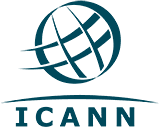Content Plan Summary for a Website Services Company
A content plan for a company that offers website creation services must meet the following: Main Objective: Increase online visibility, attract new customers, and position the company as a leader in website development through quality and strategic content. Target Audience: Small and Medium-sized Enterprises (SMEs) Entrepreneurs and Startups Non-Profit Organizations Independent Professionals Content Pillars: Education and Training: Blog posts on basic and advanced web development concepts. Step-by-step guides and tutorials on building and maintaining a website. Webinars and educational videos on trends in web design and development. Case Studies and Testimonials: Success stories of clients who have used the company's services. Interviews with satisfied clients highlighting the benefits they obtained. Showcases and Portfolio: Detailed presentations of previous projects. Videos and interactive presentations showing the development process. Industry Updates and News: Relevant news about software updates and web technology. Articles on the latest trends and future innovations in web design and development. Tips and Best Practices: Tips on SEO optimization for websites. Best practices in user experience (UX) and interface design (UI). Strategies for web security and data protection. Distribution Channels: Company Blog: Weekly posts with relevant and useful content. Social Media: Sharing content on Facebook, Twitter, LinkedIn, and Instagram to drive traffic and foster engagement. Newsletter: Monthly newsletters featuring top articles and important updates. YouTube and Video Platforms: Posting tutorials, webinars, and product demonstrations. SEO and SEM: Optimizing content for search engines and search engine marketing campaigns to increase visibility. Content Calendar: Monthly: Publish 4-6 blog articles. Produce 1-2 educational or demonstration videos. Send 1 newsletter. 2-3 posts on each social media platform per week. Quarterly: Host 1 webinar or online seminar. Publish 1 case study or client interview. Success Metrics: Increase in web traffic: Measured by Google Analytics. Improvement in conversion rates: Number of leads generated from the content. Engagement on social media: Likes, shares, comments, and mentions. Newsletter open and click-through rates. Continuous Improvement Strategies: Regular performance analysis of content: Adjust strategy based on the data obtained. Feedback from users and clients: Incorporate suggestions and comments to improve relevance and content quality. A/B Testing: Experiment with different content types and formats to determine what resonates best with the audience. This content plan is designed to position the company as a reliable and valuable resource in the field of website development, increasing its visibility and attracting new potential customers.
Read More






